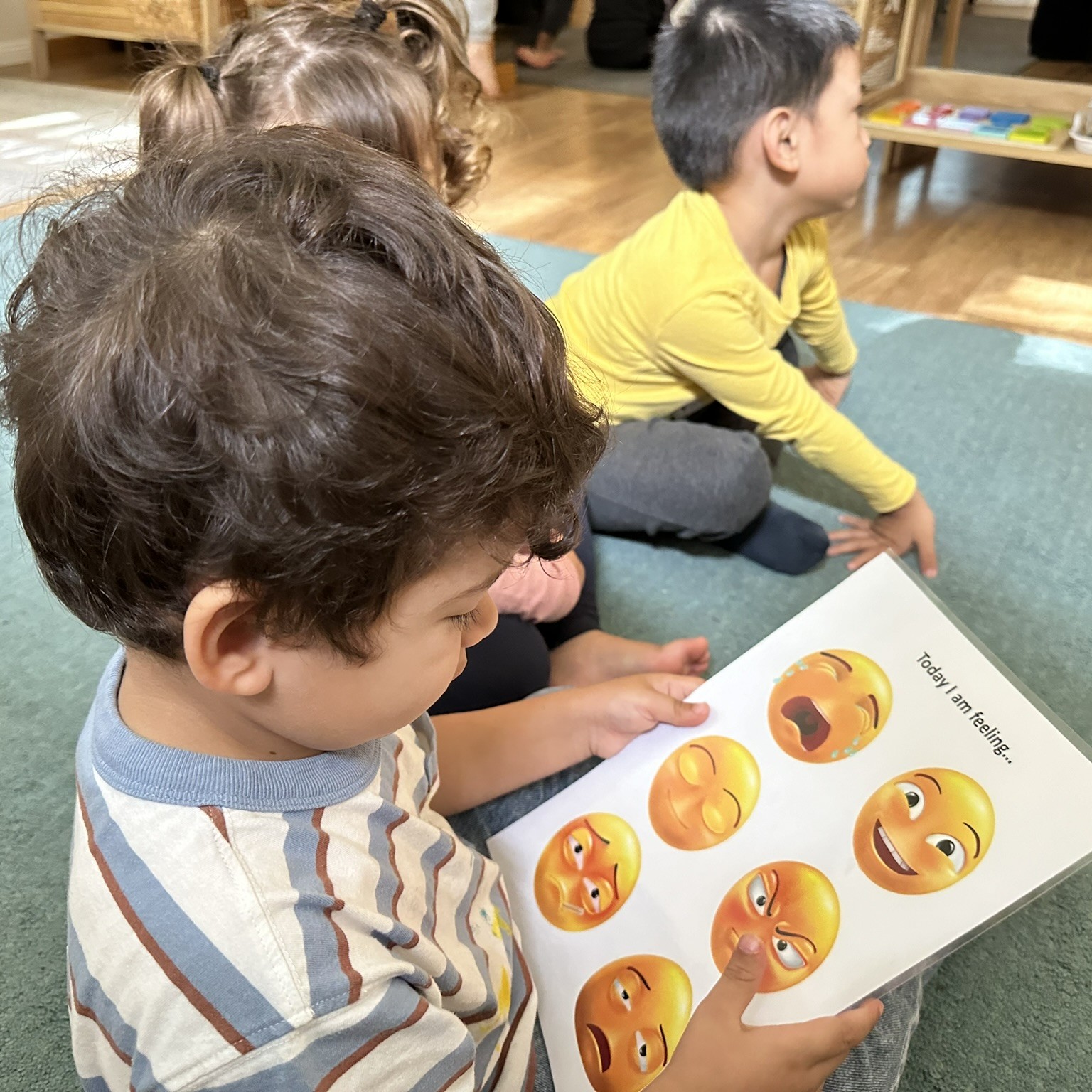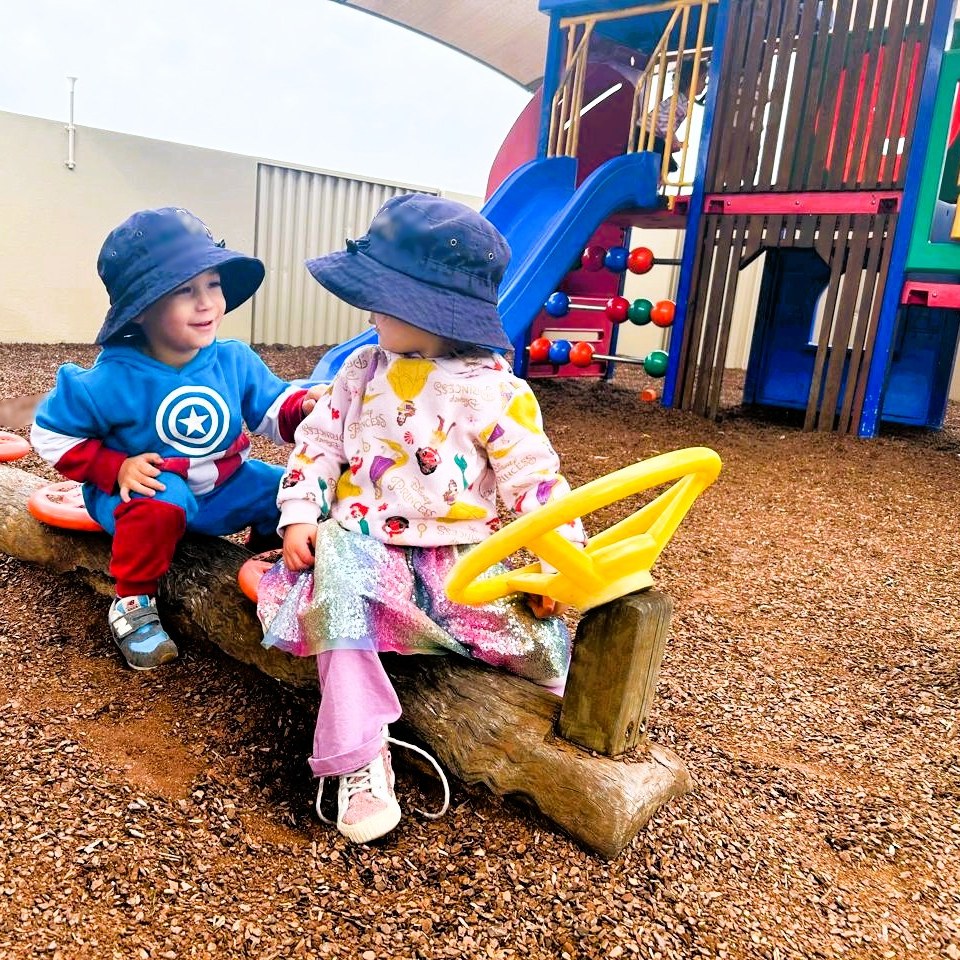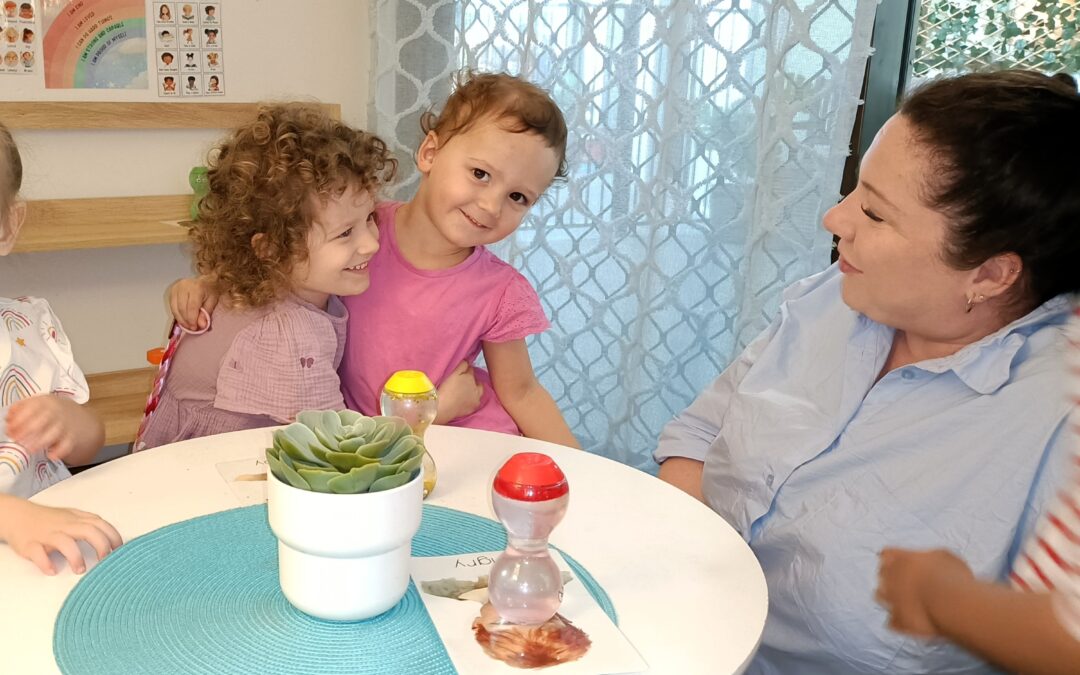
Knowing when to hug and when to hold space: Helping toddlers navigate big feelings
When Sophie’s two-year-old son, Max, threw himself on the floor screaming, she did what most parents instinctively do: she scooped him up for a hug and held him tightly. Sometimes, that helped; Max would soften into her arms and let out big tears. But at other times, it didn’t. His body stayed stiff, and though he made a noise that sounded like crying, there were no tears. Over time, Sophie realised something important: sometimes Max needed cuddles and comfort, but at other times, he needed space to process his feelings while she sat close by and let him feel his big feelings.
This is where learning the difference between Holding Space and Emotion Coaching comes in.

Sad tears vs. angry energy
Toddlers express emotions with intensity, and it’s not always easy to know what they need in the moment. It helps to look at how the feelings show up in their body:
- Sadness often comes with tears, slumped shoulders, and a child moving towards you for comfort. This is when a hug or closeness can help.
- Anger or frustration may show up as flushed faces, shouting, pushing you away, or rigid bodies. Sometimes, it’s more subtle, and a child may make crying noises, but the tears come later. This is when holding space, staying calm and nearby without rushing to soothe, is more effective.
Holding space is letting your child feel their feelings, safely, with you by their side
What does "holding space" mean?
Holding space is about being present, calm and accepting. At the same time, your child rides out their big feelings, all without being distracted or rushed to comfort or fix the problem immediately. It’s a way to non-verbally say “your feelings are safe with me,” and it lets them know that it’s okay to feel what they’re feeling, that you’re there with them and for them.
Holding space is letting your child feel their feelings, safely, with you by their side.
When to hold space
- When your child is safe but overwhelmed with frustration or disappointment (like losing a game or missing out on a playdate).
- When they push you away or don’t want physical comfort.
- When their body language shows tension or anger, not sadness.
How to hold space
- Stay calm yourself. Your steadiness helps them regulate.
- Offer gentle words to let them know you are here for them.
- Allow silence; wait until your child’s emotions start to soften.
How our educators hold space for toddlers
At Enrich, we hold space for children by sitting near them and saying, “I can see you are angry right now. I’m here when you are ready”. Then, we hold space quietly and patiently. Once the big feelings have passed, they always come to us for a hug, ready to reconnect!
What is Emotion Coaching?
Emotion Coaching happens after the storm has passed. Once your child is calm, you can help them make sense of what they felt and teach them healthy ways to handle those feelings next time.

When to Emotion Coach?
- After holding space, when the intensity has eased.
- When your child shows signs of sadness, such as tears, and seeks closeness.
- During everyday small frustrations, when your child is calm enough to talk and isn’t overwhelmed.
How to Emotion Coach?
- Name the feeling: “You were really disappointed when I said no.”
- Validate the feeling: “It’s okay to feel upset when things don’t go our way”.
- Teach healthy coping skills: “Next time, we can take some deep breaths or find another activity.”

Parenting toddlers means becoming an emotion detective
Some days your child needs your arms; other days, your calm presence. By learning when to hug, when to hold space, and when to guide with emotion coaching, you’re helping your child feel safe with their emotions — and giving them lifelong tools to manage life’s ups and downs.
Watch your child's body language
When your cries with tears straight away, it often means sadness, and comfort is welcome. Stiff, angry bodies often means space is needed. Both are okay — and both are part of raising emotionally healthy children.
How our EQM approach supports emotion growth
At Enrich, our EQM approach combines Emotional Intelligence and Montessori principles, teaching children to recognise emotions, regulate themselves, and express empathy.
Through daily emotion coaching, mindfulness, and child-led independence, children learn that all feelings are okay — and that adults will support them calmly and consistently.
It’s one of the ways we help children not only feel safe in their world, but also develop resilience, empathy, and confidence — skills that last a lifetime.
Did you know, we have an Emotion Coaching tool that you can use to practice recognising and naming emotions? Please read all about it here.
Download the 'When to hug and when to hold space' printable

FAQ's Supporting toddlers through big feelings
1. What’s the best way to respond when my toddler has a tantrum?
Stay calm, ensure they’re safe, and hold space rather than trying to fix the situation. Once calm, you can coach them through what happened.
2. How can I tell if my child needs a hug or space?
Look for cues — if they reach for you or cry with tears, they likely want comfort. If they push away or seem tense, give them gentle space.
3. Does this approach really work for all toddlers?
Yes — when practised consistently, children learn to trust that their emotions are safe, helping them regulate faster and connect more deeply with you.
4. Can educators use these techniques too?
Absolutely. At Enrich, our educators are trained in Emotional Intelligence and Montessori practices to help children recognise and manage feelings in a supportive environment.

Recent Comments